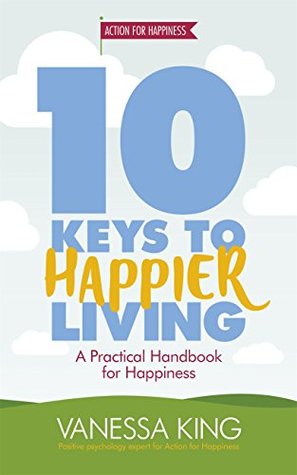More on this book
Kindle Notes & Highlights
by
Vanessa King
Read between
September 10 - September 24, 2025
Psychologists call this ‘mindful coping’
The three-minute breathing space has three phases: 1 Acknowledging the comings and goings in your mind. 2 Focusing attention on a specific point of your body – the abdomen. 3 Expanding your attention to become aware of your whole body.
First – notice what’s going on inside * Bring your awareness to your thoughts. Notice them as passing events and try not to get caught up by them. * What emotions or feelings do you notice? Have a curious but ‘warm’ look at them, even if they are unpleasant. Don’t try to change them in any way. Just notice that they are there. * What sensations do you notice in your body? Any tightness, tension or discomfort? Again be curious and ‘warm’, don’t try to change the sensations in any way. Just notice that they are there. Second – focusing attention * Focus on your breath and the sensations it
...more
Start short and build up.
Be regular, get anchored.
Do some mindfulness rather than none.
Try something different.
Don’t worry if it doesn’t always go well
Dweck says we can approach learning with a ‘growth mindset’, allowing us to try fresh approaches, work through challenges and so improve, or approach learning with a ‘fixed mindset’, which can mean that we give up quickly or don’t even try things in the first place because we’re afraid to fail.
Langer calls her work ‘the psychology of possibility’. ‘It’s so simple’, she says. ‘It’s finding ways to be in a flexible state of mind in which we’re actively engaged in the present and noticing the novel and the new and are sensitive to context.’ In fact, some people refer to her work as ‘creative mindfulness’.
It’s a gateway into flow,
Flow is a state of deep focus on, and absorption in, something we’re doing.
psychologist Mihaly Czikszentmihalyi,
Crum suggests these three steps:
Name it
Recognise it means you care
Harness it
‘There is nothing either good or bad, but thinking makes it so.’ William Shakespeare, Hamlet
But often our instant interpretations aren’t accurate and may be unhelpful – or could even be harmful. If we act on them without pausing to check them, it can set off chain reactions in ourselves and others, taking up emotional energy and head space, impacting our relationships and unnecessarily undermining our own and others’ well-being.
Pausing just for a split second enables us to tune into our instant interpretations, check their accuracy by looking for evidence for and against them, and challenge them if they are irrational or unhelpful.
How do we make the most of the positive experiences and transform them into joy? It’s a question psychologists have been looking at and the answer seems to be learning how to ‘savour’.
We can enhance savouring by:
Immersing ourselves in the experience
Paying attention to all our senses
Anchoring the experience in our memory,
Sharing the moment with others.
We can savour past experiences or future ones.
creating a ‘positive portfolio’,
One of the most effective ways we can increase our gratitude is by simple writing activities.
Emmons says that there’s something about the act of writing that really helps us to get the benefit from these activities.
In a now-classic positive psychology study by Martin Seligman and colleagues, people were asked each night for a week to reflect on their day and write down three things that went well and what caused them.
This simple activity gradually increased people’s happiness and decreased depression symptoms over the six-month period.
In my view, this activity literally trains our brain to start noticing what’s right, not just what’s wrong.
Psychologist Kristin Neff, a leading researcher on self-compassion, has identified three parts to it, which combine and act together. These are: being kinder to ourselves rather than judging harshly; having a sense of common humanity rather than disconnection from others and mindfulness, which helps us recognise our thoughts and feelings without getting caught up in them.
Becoming aware of your strengths
Think of the things that: * You loved doing as a child – what was it about them that you loved? * Come very easily to you and you pick up quickly. * You associate with the words: ‘I love to’. * Get done quickly on your to-do lists. * Your friends, colleagues and family come to you for help with.
So what are your signature strengths?
Viktor Frankl, an Austrian psychiatrist and Holocaust survivor, wrote a powerful short book called Man’s Search for Meaning as a result of his experience. In his view it was up to us to discover and define what meaning in our life signifies.
For the ‘father’ of positive psychology, Martin Seligman, a meaningful life is one where we are connected or contribute to something beyond, or larger than, ourselves.
‘He who has a why to live for can bear almost any how.’ Nietzsche, cited by Viktor Frankl in Man’s Search for Meaning
Viktor Frankl
In his view there were three main sources of meaning in life: * Creative or significant work, such as achievements or good deeds. * Valued or elevating experiences of relationships, art or beauty. * Suffering Our ability to reflect and grow from negative experiences or suffering and the attitude we take towards situations we can’t change.


